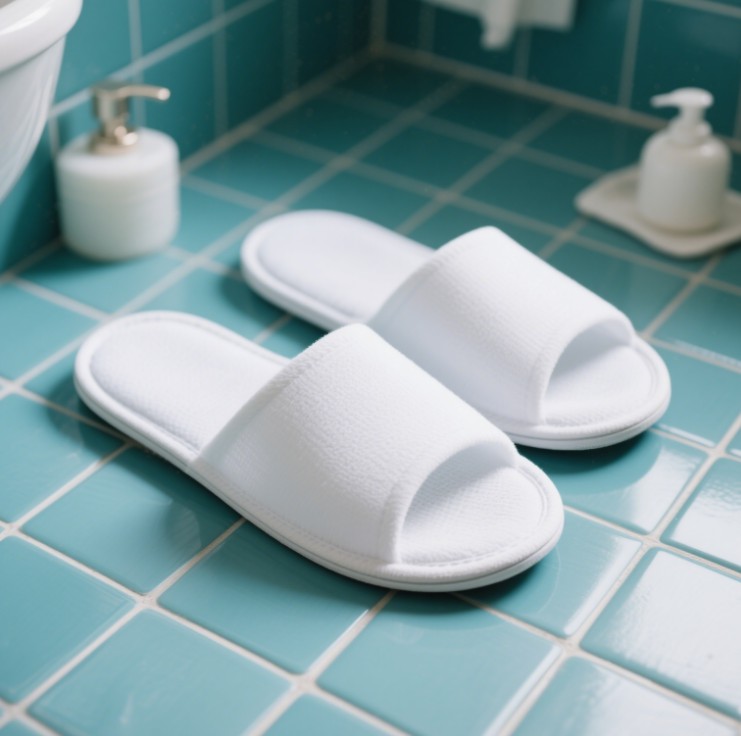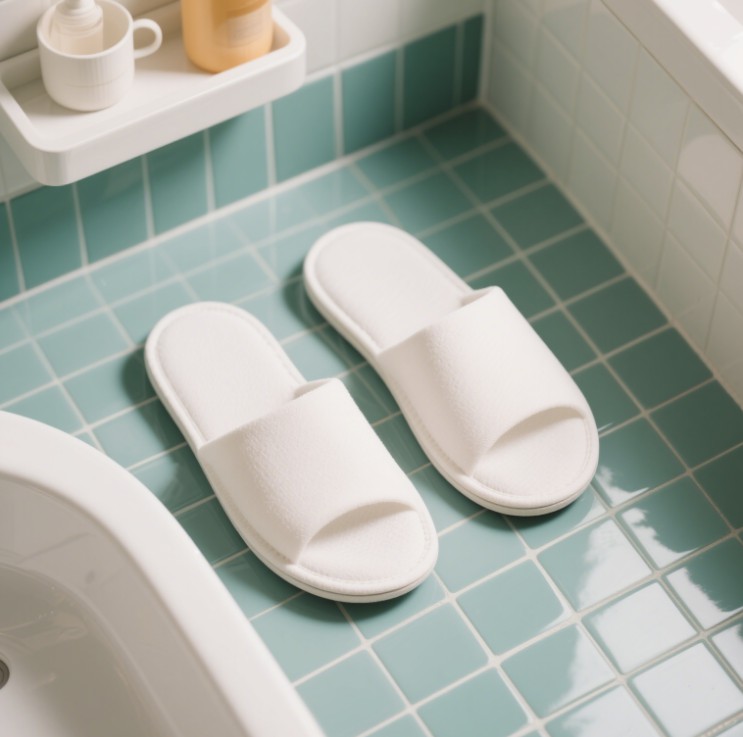It was a quiet Sunday morning when Jamie’s peaceful routine took a turn for the dramatic. Fresh out of the shower, wrapped in a towel, she stepped onto the cool tile floor—and within a second, her right foot slid out from under her like a cartoon character on a banana peel.
The fall wasn’t too bad—just a bruised elbow and a bruised ego—but it was a wake-up call. Her bright pink bathroom slippers, which she’d bought more for the color than the construction, had utterly failed her. They were cheap molded plastic, smooth on the bottom, and clearly no match for wet tile.
Later that day, she found herself sitting at her kitchen table, an ice pack on her arm and her laptop open in front of her, typing “best non-slip bathroom slippers” into the search bar. What followed was a deep dive into the world of sole materials: plastic, EVA, rubber—each with its own promise, each with its own pros and cons.
But Jamie didn’t want marketing slogans or filtered photos. She wanted proof. So, she did what any determined person would do: she ordered one pair of each kind and set up a little “slip test” of her own.
A few days later, three boxes arrived at her door.
First came the plastic pair. Lightweight, colorful, and almost weightless in her hand. They looked similar to the ones she had before—simple, one-piece molded plastic with a glossy finish. She stepped into them and walked across her bathroom floor, which she’d lightly misted with water for realism. The moment her heel hit the slick tile, she felt the same unsettling slide. Not as dramatic as last time, but enough to raise her heart rate.
Next up was the EVA pair. They were stylish in that “minimalist hotel spa” kind of way, with a soft, foamy texture that squished underfoot. On dry ground, they were heavenly—like walking on marshmallows. But once the floor was wet again, their performance dropped. She didn’t slip completely, but there was a subtle skidding sensation, as if the sole was more about comfort than grip. She made a mental note: great for lounging, maybe not for post-shower sprints.

Finally, she tried the rubber-soled pair. Heavier than the others, with a textured tread pattern on the bottom that reminded her of hiking boots. The moment her foot hit the tile, there was a difference. The sole gripped the floor like it had suction cups. No slide, no skid, not even the tiniest shift. She moved forward, then pivoted, then mimicked the motion that had sent her flying earlier that week. Still—solid.
Jamie chuckled. It felt a bit ridiculous, doing her own in-home slipper Olympics, but the results were clear.
The plastic pair was out. Cheap, sure—but dangerously so. The EVA ones were cozy and stylish, good for bedrooms or lounging, but not when water was involved. The rubber-soled slippers? They were the real MVPs. Not the prettiest, maybe, but when it came to safety, they delivered.
From then on, every time she stepped out of the shower, she did so with confidence. Her new rubber slippers might not have matched her bathroom decor, but they matched something far more important—peace of mind.
When it comes to bathroom footwear, it’s not just about softness or style—it’s about staying upright. While plastic slides and EVA cushions, it’s rubber that truly grips. Because sometimes, the difference between a peaceful morning and a painful fall is just a few millimeters of sole.
